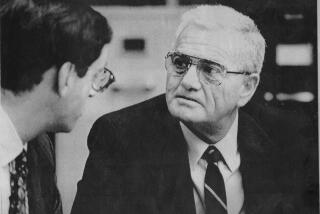Researchers erase fear memories in people through behavior alone
Scientists are one step closer to understanding how to erase painful fear memories by successfully erasing them in a small group of people, according to a study published Thursday in the journal Science. The intervention requires no drug, acting through behavioral intervention alone.
The new report follows a series of studies in which researchers have made significant headway in understanding where such fear memories are processed in the brain, and how to erase them for good.
Much of this research has been carried out in rodents, where researchers have shown that it is possible to erase fear memories by both pharmacological and behavioral means. The key, they have found, is a period called reconsolidation. When someone is reminded of their fearful memory -- like when a soldier has a vivid flashback of a bomb exploding -- the memory becomes malleable and subject to alteration for a time, and then is stored again — or reconsolidated. As a result, many researchers believe that the period of reconsolidation is the best time to intervene to erase such memories because it includes a period where the memory is vulnerable. Some behavioral studies in humans have reinforced this notion.
In the new study, researchers from Uppsala University in Sweden first gave people something to fear -- an image that, every time it flashed on a computer screen, was paired with a shock. They then brought the subjects back the next day and reminded them of their fear memory -- the beginning of the reconsolidation process -- by showing just the image that they had associated with the shock the day before. This reactivated the memory, inducing fear, but theoretically also making the memory easier to erase.
Next, they split the subjects into two groups. One got an “extinction treatment” 10 minutes after reconsolidation, in which the researchers showed the subjects the images over and over again without shocks, so that the subjects would stop associating one with the other. The other group got the same treatment, but after a six-hour delay.
In both groups, the researchers then measured how “present” the fear memory was, using a standardized measure of skin conductance-basically how sweaty their skin gets during a presentation of the feared image.
The first group showed no fear, while the second group showed quite a bit, confirming that the timing mattered; extinguishing the memory only worked when it was carried out shortly after the memory was reactivated.
The researchers also wanted to understand what role the amygdala, a brain region commonly believed to underlie the storage and recall of fear memories, was playing in all this. So on the third day, they brought the subjects back and again showed them the images they had previously associated with a shock. They found that, in the group that had failed to have the memory erased, activity in the amygdala predicted whether fear would return, and correlated spatially with activity when the fear was recalled. In the other group, no such relationship existed. In other words, in the group that received an immediate memory extinction treatment, the memory trace had disappeared from the amygdala, while it remained in the group that had a delayed treatment.
When the researchers looked at the network the amygdala is connected to, they found the same thing: in the group that had a six-hour break before fear extinction, which the scientists believe allowed the memory to be fully reconsolidated, the fearful image induced a highly active fear network, while the group that received fear extinction treatment immediately had a quiet network, further evidence their memories had been erased.
The study provides a shred of hope for those suffering from post-traumatic stress disorder, and from fear memories more generally.
It also shows how the sometimes mysterious workings of the brain -- the fact that memories are constantly recalled and reconsolidated, for example, rather than existing statically in the brain -- can be used to our advantage. In other words, if this line of research is correct, memory reconsolidation is both the process that allows fearful memories to continue to be fearful for years on end, and also presents our best chance to get rid of such memories. As a result, it may not be long before doctors are using the approach to erase memories without a drug in sight.
You can read a summary of the study here.
Return to the Science Now blog.






